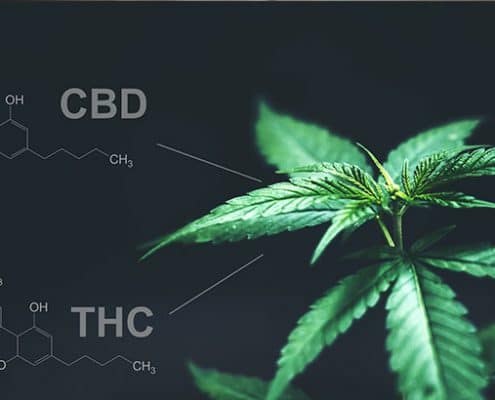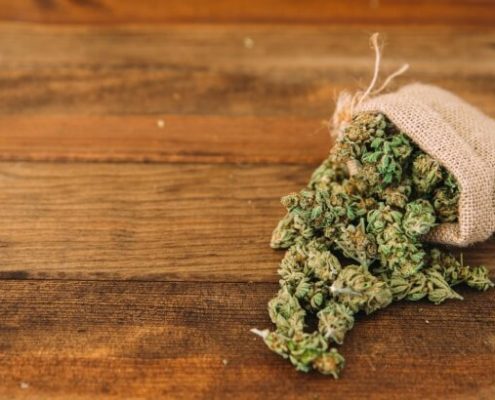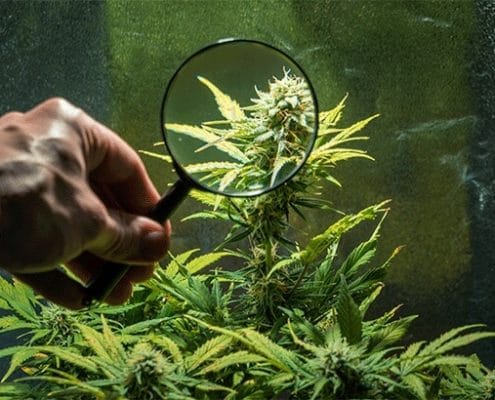What Are Synthetic Cannabinoids? What Are Their Effects? 30 Oct, 2020
What Are Synthetic Cannabinoids? What Are Their Effects?
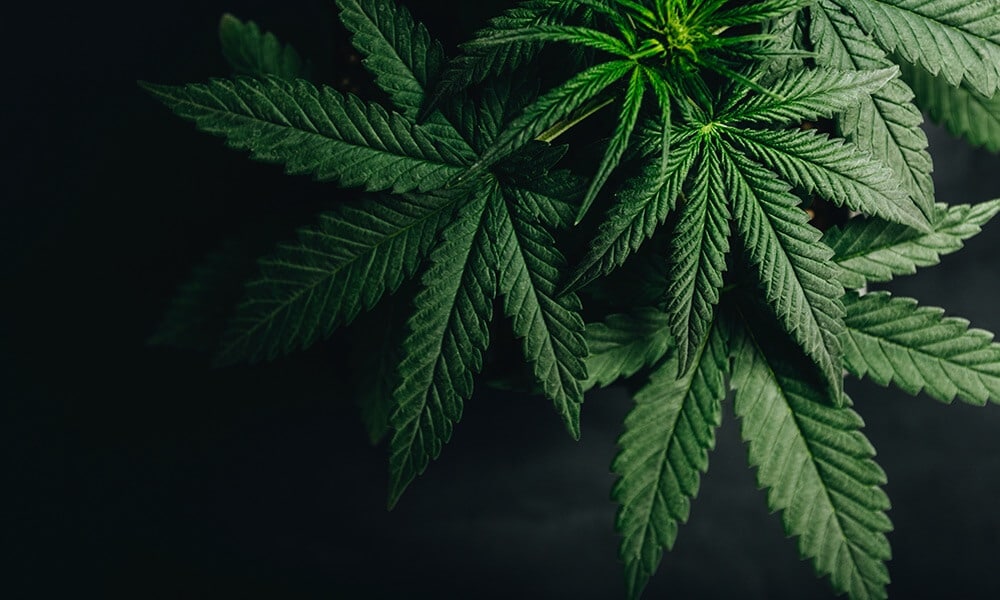
When synthetic cannabinoids started circulating in the mid-2000s, they were marketed as a legal way to get the same effects you could get from using natural cannabis. However, as more people tried synthetic cannabinoids, it became clear that they gave an effect that was entirely their own. It also became clear– to both individual people and governments across the world– that these effects could be extremely dangerous. Many people who have tried synthetic cannabinoids have suffered severe side effects and, tragically, some people have died due to taking synthetic cannabinoids.
What Are Synthetic Cannabinoids?
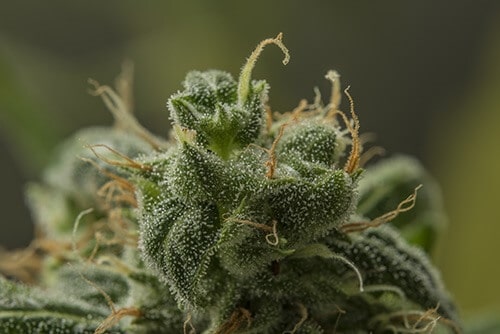
“Synthetic cannabinoids” is a term that’s applied to a variety of similar unregulated designer drugs that provide intense and often dangerous effects. Synthetic cannabinoids may be called by many names, such as K2, Spice, synncans, liquid incense, potpourri, or synthetic marijuana. They can also come in more than one form. They’re often sprayed on dried, flammable plant material that’s meant to be smoked. This is generally called “herbal incense” or “herbal tea,” and it will usually be sold in small foil packets, which often feature a cartoon character and/or the words “not for human consumption.” Synthetic cannabinoids may also be sold in liquid form and marketed as “c-liquid” or “vape fluids.”
The name “synthetic cannabinoids” is technically accurate, since these are man-made chemicals that interact with the cannabinoid receptors in the body’s endocannabinoid system. However, it’s also extremely misleading, since people usually think of the natural cannabinoids in cannabis (like CBD and THC) when they hear the word “cannabinoids.” But synthetic cannabinoids are not a cannabis product, nor do they have the same chemical composition or effects as natural cannabinoids. Synthetic cannabinoids are also a different type of cannabinoid receptor agonist, so they do not interact with the body’s cannabinoid receptors in the same way natural cannabinoids do. Synthetic cannabinoids are what chemists call “full agonists,” whereas real cannabinoids like THC are “partial agonists.” Essentially, this means that a natural cannabinoid like THC partially activates the receptors it binds with, while synthetic cannabinoids activate the receptors they interact with to their maximum capacity– and this is not a good thing.
Synthetic cannabinoids can be anywhere from twice as potent as THC to one hundred times as potent as THC. This can lead to severe side effects, including vomiting, hallucinations, kidney damage, and psychosis. Synthetic cannabinoids can also cause serious withdrawal symptoms, overdose, and death.
The Origins and Evolution of Synthetic Cannabinoids

Over the years, Professor Huffman and his team created over 400 new synthetic cannabinoids. After Huffman’s work was published in the mid-2000s, a German forensic lab reported finding one of Huffman’s synthetic cannabinoids, JWH-018, in street drugs. These illicit drugs were called K2 and Spice and they were being sold as marijuana alternatives. It’s thought that someone, or some group of people, created these first publicly available synthetic cannabinoids by following what Huffman said he did in his work. Huffman would later say that he thought the makers of K2 and Spice must have chosen JWH-018, rather than the hundreds of other cannabinoids he created, as their active ingredient because it “has the combination of being quite potent and easy to make.”
The street drugs known as K2 and Spice would quickly spread, despite the fact that they were promptly banned in most places. To get around the fact that their replica of Huffman’s JWH-018 was made illegal, the people that were making synthetic cannabinoids simply slightly tweaked the molecular structure of the synthetic cannabinoids they were selling, creating something new that was technically not illegal. This process continued and continued– and it continues to this day. As federal, state, and local governments have made certain synthetic cannabinoids illegal, the people that make them (who are thought to mostly be in China) just keep changing their chemical structure.
Now, the synthetic cannabinoids that are in circulation are many generations away from Huffman’s creations, which generally mimicked THC. The synthetic cannabinoids out in the world today include a variety of new, untested, and generally very dangerous compounds. There are hundreds of different synthetic cannabinoids out there and they are all still continuously evolving, despite the fact that governments have started banning synthetic cannabinoids more generally. For example, here in the United States “synthetic compounds commonly found in synthetic marijuana” are illegal at the federal level, but new synthetic cannabinoids continue to trickle into the United States through illicit means.
It’s important to note that synthetic cannabinoids are not only inherently dangerous themselves, they can also come coupled with dangerous filler ingredients. Since these are unregulated products, there’s no way of telling how a synthetic cannabinoid product was made, where it was made, what potency it has, or even what’s in it. And forensic investigators have frequently found that synthetic cannabinoids also contain unnamed additives, some of which have been very dangerous.
A notable example of dangerous synthetic cannabinoids filler ingredients comes from 2018. In 2018, the Illinois Department of Health reported that some synthetic cannabinoids that had been circulating in the state contained vitamin K antagonists (blood thinners). According to the Department of Public Health and the Centers for Disease Control and Prevention (CDC), ingesting this combination of synthetic cannabinoids and vitamin K antagonists resulted in severe bleeding among a number of users, four of whom died due to their severe bleeding. Toxicology lab testing later found that the exact vitamin K antagonist found in these drugs was brodifacoum, a type of rat poison that is sometimes added to synthetic cannabinoids because it’s thought to extend the duration of their effects.
Alternate Names for Synthetic Cannabinoids
Synthetic cannabinoids are known by many different names, including:
- Synthetic Marijuana
- Synthetic Weed
- Fake Weed
- Fake Pot
- Herbal Smoking Blend
- Herbal Incense
- Herbal Tea
- Potpourri
- JWH-018
- JWH-073
- Synncans
- Liquid Incense
- C-Liquid
According to the CDC, synthetic cannabinoids are also often known by the brand names that may appear on their packages. There are hundreds upon hundreds of these brand names. Some of the more common ones include:
- K2
- Spice
- AK-47
- Happy
- Scooby Snax
- Kush
- Kronic
- Black Mamba
- Genie
What Are The Side Effects of “Synthetic Weed?”
While synthetic cannabinoids may be marketed as “synthetic weed,” the serious side effects caused by these drugs are very different from the effects of real cannabis.
Even the more common and general side effects of synthetic cannabinoid intoxication can be serious. Common adverse effects of synthetic cannabinoids include:
- Nausea and Vomiting
- Anxiety or Irritability
- Suicidal Thoughts
- Dry Mouth or Dehydration
- Depression
- Severe Headaches
- Pale Skin
- Profuse Sweating
Synthetic cannabinoids can also cause intense, unintended effects in users due to their incredible potency and the unstudied effects of whatever may be in the particular blend a person uses. Some serious and potentially fatal side effects of synthetic cannabis include:
- Psychosis, Which Causes Symptoms Such As:
- Delirium
- Intense Paranoia
- Hallucinations or Delusions
- Extreme Anxiety
- Brain Changes
- Seizures
- Cardiovascular Damage
- Renal System Damage (Kidney Damage)
- Elevated Blood Pressure
- Tachycardia (Increased Heart Rate) and Palpitations
- Violent Behavior
- Serotonin Syndrome
In addition to the severe side effects that may occur with use, regular users often experience withdrawal symptoms when they try to discontinue the use of synthetic cannabinoids. These withdrawal symptoms may include:
- Headaches
- Irritability
- Depression
- Anxiety
- Cravings
Note that it is also possible to overdose on synthetic cannabinoids, as they can be highly toxic and they may also be packaged with illicit drugs and other dangerous substances, such as the aforementioned rat poison. Another dangerous substance that has been found in synthetic cannabinoid mixtures is synthetic opioids, such as fentanyl. According to the National Institute on Drug Abuse, these two synthetic drugs create a particularly deadly combination. The Institute notes that death can often occur when synthetic opioids, such as fentanyl, are added into a package of synthetic cannabinoids without the user knowing it.
Final Thoughts: Synthetic Weed vs. Real Weed
While synthetic cannabinoids are often called “synthetic weed” or “synthetic marijuana,” please remember that these names are incredibly misleading. The man-made drugs that people call synthetic cannabinoids are in no way a form of cannabis. They’re also not derived from cannabis, they don’t have the same effects as cannabis, and they come with the risk of very dangerous health effects. Synthetic cannabinoids are very dangerous drugs– especially because you have absolutely no way of knowing what’s actually in them. These drugs are simply not worth the many risks they come with.


